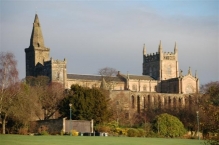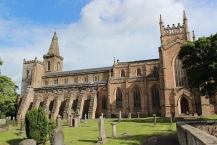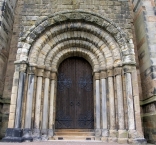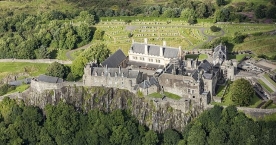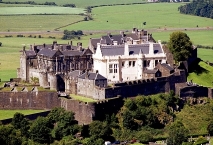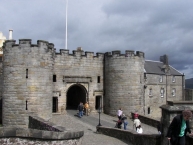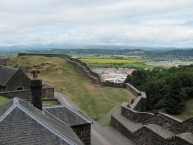Radweg Kirkcaldy - Berwick-upon-Tweed
Nr. des Radweges 76
Aktionen
![]()
Bitte warten - Kartendaten werden geladen
Erstellt am 14.09.2012,
zuletzt geändert von biroto-Redaktion am 29.10.2023
Aktionen
Strecken-Merkmale
Gesamtlänge in km
260
Informationen zu Rechten an den GPS-Track-Daten | |
|---|---|
Rechte-Inhaber | OpenStreetMap and Contributors + biroto-Redaktion (biroto.eu) |
Rechte-Ausprägung / Lizenz | Enthält Daten von OpenStreetMap, die hier unter der Open Database License(ODbL) verfügbar gemacht werden |
Link zur Rechtebeschreibung | |
gpx-Datei übernommen aus | |
gpx-Datei hochgeladen | durch biroto-Redaktion am 29.10.2023
|
Gesamtzahl Trackpoints
4.734
Trackpoint-Dichte per km
18
Endorte
Start
Kirkcaldy, SCT, GB (12 m NHN)
Ziel
Berwick-upon-Tweed, ENG, GB (22 m NHN)
Fahrradfreundliche Unterkünfte, Sehenswertes und Infrastruktur
Name u. Anschrift
Breite / Länge
Tel.
Fax.
Mobile
Art d. Unterkunft
Radler-freund-lichkeit
Strecken-km
km zur Strecke
Höhe
22 km
1,3 km
22 m
30 bike lockers available.
32 km
1,8 km
21 m
38 km
3,7 km
92 m
Informationen zu Urheber-Rechten | |
|---|---|
Rechte-Inhaber | Paul McIlroy |
Rechte-Ausprägung / Lizenz | by-sa: CREATIVE COMMONS Namensnennung, Weitergabe unter gleichen Bedingungen |
Link zur Rechtebeschreibung | |
Bild übernommen aus | https://commons.wikimedia.org/wiki/File:Dunfermline_Abbey_Geograph.jpg |
Bild hochgeladen | durch biroto-Redaktion am 12.12.2020
|
Informationen zu Urheber-Rechten | |
|---|---|
Rechte-Inhaber | https://commons.wikimedia.org/w/index.php?title=User:Wandernder_Weltreisender |
Rechte-Ausprägung / Lizenz | by-sa: CREATIVE COMMONS Namensnennung, Weitergabe unter gleichen Bedingungen |
Link zur Rechtebeschreibung | |
Bild übernommen aus | https://commons.wikimedia.org/wiki/File:AbteiDunfermline.JPG |
Bild hochgeladen | durch biroto-Redaktion am 12.12.2020
|
Informationen zu Urheber-Rechten | |
|---|---|
Rechte-Inhaber | |
Rechte-Ausprägung / Lizenz | by-sa: CREATIVE COMMONS Namensnennung, Weitergabe unter gleichen Bedingungen |
Link zur Rechtebeschreibung | |
Bild übernommen aus | https://commons.wikimedia.org/wiki/File:Dunfermline_Abbey_20080503_west_entrance.jpg |
Bild hochgeladen | durch biroto-Redaktion am 12.12.2020
|
Dunfermline Abbey is a Church of Scotland Parish Church in Dunfermline , Fife, Scotland. The church occupies the site of the ancient chancel and transepts of a large medieval Benedictine abbey, which was sacked in 1560 during the Scottish Reformation and permitted to fall into disrepair. Part of the old abbey church continued in use at that time and some parts of the abbey infrastructure still remain. Dunfermline Abbey is one of Scotland's most important cultural sites.
The current building on the site of the choir of the old abbey church is a parish church of the Church of Scotland, still with the name Dunfermline Abbey.
Architecture
The old building was a fine example of simple and massive Romanesque, as the nave testifies, and has a beautiful doorway in its west front. Another rich Romanesque doorway was exposed in the south wall in 1903, when masons were cutting a site for the memorial to the soldiers who had fallen in the Second Boer War. A new site was found for this monument in order that the ancient and beautiful entrance might be preserved. The venerable structure is maintained publicly, and private munificence has provided several stained-glass windows.
Informationen zu Urheber-Rechten | |
|---|---|
Rechte-Ausprägung / Lizenz | by-sa: CREATIVE COMMONS Namensnennung, Weitergabe unter gleichen Bedingungen |
Link zur Rechtebeschreibung | |
Text(e) übernommen von: |
Wikipedia contributors, 'Dunfermline Abbey', Wikipedia, The Free Encyclopedia, 16 October 2020, 12:43 UTC, <https://en.wikipedia.org/w/index.php?title=Dunfermline_Abbey&oldid=983821243> [accessed 12 December 2020] |
übernommen / bearbeitet am | 12.12.2020
|
übernommen / bearbeitet durch |
|
73 km
3,2 km
10 m
6 bike lockers available.
76 km
0,8 km
81 m
Informationen zu Urheber-Rechten | |
|---|---|
Rechte-Inhaber | |
Rechte-Ausprägung / Lizenz | cc0: Public Domain keine Rechte vorbehalten |
Link zur Rechtebeschreibung | |
Bild übernommen aus | https://commons.wikimedia.org/wiki/File:Scotland-2016-Aerial-Stirling-Stirling_Castle_great_hall.jpg |
Bild hochgeladen | durch biroto-Redaktion am 20.01.2019
|
Informationen zu Urheber-Rechten | |
|---|---|
Rechte-Inhaber | |
Rechte-Ausprägung / Lizenz | by: CREATIVE COMMONS Namensnennung |
Link zur Rechtebeschreibung | |
Bild übernommen aus | https://commons.wikimedia.org/wiki/File:Stirling_Castle_(5456318768).jpg |
Bild hochgeladen | durch biroto-Redaktion am 20.01.2019
|
Informationen zu Urheber-Rechten | |
|---|---|
Rechte-Inhaber | |
Rechte-Ausprägung / Lizenz | by-sa: CREATIVE COMMONS Namensnennung, Weitergabe unter gleichen Bedingungen |
Link zur Rechtebeschreibung | |
Bild übernommen aus | https://commons.wikimedia.org/wiki/File:Stirling_Castle_Forework_Gatehouse_2.jpg |
Bild hochgeladen | durch biroto-Redaktion am 20.01.2019
|
Informationen zu Urheber-Rechten | |
|---|---|
Rechte-Inhaber | https://commons.wikimedia.org/w/index.php?title=User:Janfrie1988 |
Rechte-Ausprägung / Lizenz | cc0: Public Domain keine Rechte vorbehalten |
Link zur Rechtebeschreibung | |
Bild übernommen aus | https://commons.wikimedia.org/wiki/File:Stirling_Castle_Nether_Bailey.jpg |
Bild hochgeladen | durch biroto-Redaktion am 20.01.2019
|
Stirling Castle, located in Stirling , is one of the largest and most important castles in Scotland, both historically and architecturally. The castle sits atop Castle Hill, an intrusive crag, which forms part of the Stirling Sill geological formation. It is surrounded on three sides by steep cliffs, giving it a strong defensive position. Its strategic location, guarding what was, until the 1890s, the farthest downstream crossing of the River Forth, has made it an important fortification in the region from the earliest times.
Most of the principal buildings of the castle date from the fifteenth and sixteenth centuries. A few structures of the fourteenth century remain, while the outer defences fronting the town date from the early eighteenth century.
Before the union with England, Stirling Castle was also one of the most used of the many Scottish royal residences, very much a palace as well as a fortress. Several Scottish Kings and Queens have been crowned at Stirling, including Mary, Queen of Scots, in 1542, and others were born or died there.
There have been at least eight sieges of Stirling Castle, including several during the Wars of Scottish Independence, with the last being in 1746, when Bonnie Prince Charlie unsuccessfully tried to take the castle. Stirling Castle is a Scheduled Ancient Monument, and is now a tourist attraction managed by Historic Environment Scotland.
Modern use
The castle esplanade, or parade ground, has been used as an open-air concert venue for several noted acts, some of whom have used Stirling Castle and the surrounding scenery to film "in concert" DVDs. The esplanade also hosts the city's Hogmanay celebrations. The Regimental Museum and Home Headquarters of the Argyll and Sutherland Highlanders are located in the King's Old Building. The museum closed for refurbishment on 31 August 2018 and is scheduled to reopen in June 2019.
Stirling Castle is a popular place for tourists, and according to figures released by the Association of Leading Visitor Attractions, nearly 460,000 people visited in 2015.
Informationen zu Urheber-Rechten | |
|---|---|
Rechte-Ausprägung / Lizenz | by-sa: CREATIVE COMMONS Namensnennung, Weitergabe unter gleichen Bedingungen |
Link zur Rechtebeschreibung | |
Text(e) übernommen von: |
Wikipedia contributors, 'Stirling Castle', Wikipedia, The Free Encyclopedia, 19 December 2018, 08:17 UTC, <https://en.wikipedia.org/w/index.php?title=Stirling_Castle&oldid=874442868> [accessed 19 January 2019] |
übernommen / bearbeitet am | 20.01.2019
|
übernommen / bearbeitet durch |
|
Öffnungszeiten
Summer | Closing Time | Last entry |
|---|---|---|
1 Apr - 30 Sept | 6pm | 5.15pm |
Winter | Closing Time | Last entry |
1 Oct - 31 Mar | 5pm | 4.15pm |
![]()

